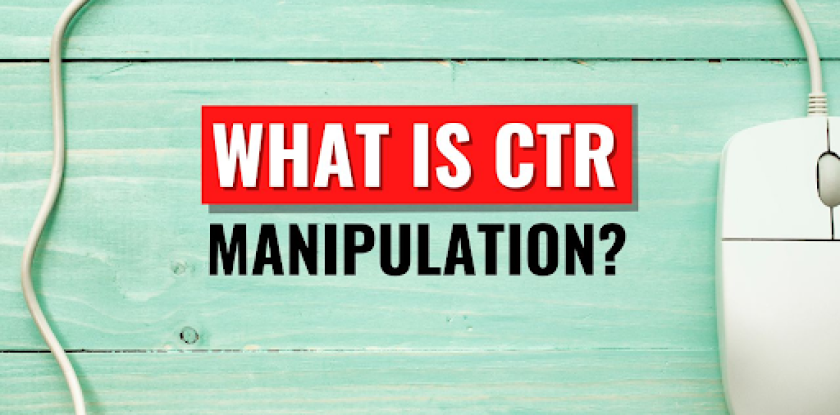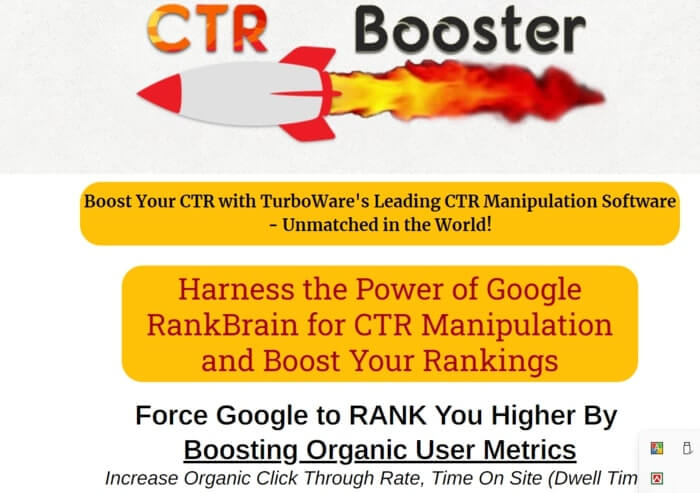LinkDaddy CTR Manipulation: Achieving Top Rankings with Advanced CTR Techniques
LinkDaddy CTR Manipulation: Achieving Top Rankings with Advanced CTR Techniques
Blog Article
Involvement Techniques: The Value of CTR Control
In the world of electronic marketing, understanding and adjusting Click-Through Rate (CTR) functions as a cornerstone for effective involvement strategies. As a vital statistics that shows exactly how well material resonates with its intended target market, CTR can be influenced by different techniques, from the crafting of headlines to the integration of visuals. However, the nuances of CTR adjustment extend past simple numbers; they take advantage of the psychology of audience interaction. The exploration of these techniques exposes vital understandings that can reshape your technique to interaction, prompting a reevaluation of your present practices. What might these insights entail?
Understanding Click-Through Price
Although the idea of click-through rate (CTR) may appear simple, it plays a critical function in evaluating the effectiveness of electronic marketing campaigns. CTR is defined as the proportion of individuals who click a certain link to the number of complete users who check out the associated content, commonly expressed as a percentage. This metric acts as a crucial performance sign (KPI) for assessing the success of various online advertising techniques, consisting of email marketing, social media advertisements, and internet search engine marketing.
A high CTR indicates that the content resonates with the target audience, prompting them to engage better with the product. Alternatively, a reduced CTR might signal that the material stops working to record passion or supply worth.
Elements Influencing CTR
A number of variables dramatically influence click-through price (CTR), forming exactly how successfully material captures target market attention. One essential aspect is the significance of the material to the target audience. When material aligns very closely with customers' passions and demands, it naturally increases involvement and boosts CTR.
Another crucial component is the quality and clarity of the heading or subject line. Engaging headings that evoke curiosity or offer clear worth propositions can entice customers to click. In addition, the aesthetic allure of material, including photos and format, plays a crucial duty; properly designed visuals can attract focus and encourage communication.
Timing likewise affects CTR; posting web content when the audience is most energetic can cause greater interaction rates. Furthermore, the placement of links within content is considerable; strategically positioning calls-to-action can guide customers toward clicking.
Last but not least, user count on and integrity influence CTR. Material from familiar brands or reliable sources normally gathers more clicks, as customers are most likely to engage with material they perceive as trustworthy. By understanding and leveraging these elements, marketers can improve their content techniques and optimize CTR successfully.
Techniques for CTR Control
Reliable techniques for click-through rate (CTR) adjustment can significantly boost on-line interaction and drive traffic. One of the most impactful methods is optimizing headings and titles.
Another technique includes the calculated use meta descriptions. A well-written meta summary offers a succinct summary of the web content while tempting individuals to click. CTR Manipulation Service. Utilizing action-oriented language and clear value suggestions can improve CTR
Visual elements likewise play a critical function. Integrating appealing pictures, infographics, or videos can attract individuals' attention, making the content extra enticing. Additionally, A/B testing various visuals can generate insights right into what resonates most with the target market.
Finally, leveraging social proof, such as customer evaluations or testimonials, can build credibility and motivate clicks. Showing the appeal of content or highlighting endorsements cultivates trust and attracts customers to engage.
Measuring Involvement Effectively
Measuring engagement effectively is critical for comprehending the influence of CTR control methods. These metrics help evaluate whether the increase in CTR equates to significant customer interaction or simply shows surface clicks.

Additionally, division analysis can recognize which audience demographics are most engaged, allowing customized web content delivery that reverberates with particular teams. Devices like Google Analytics or warmth mapping software application can picture individual habits, highlighting locations of rate of interest or rubbing within the content.
Inevitably, a comprehensive method that integrates quantitative and qualitative information is vital for properly measuring interaction. This multifaceted analysis will inform the recurring refinement of CTR control methods, ensuring positioning with user assumptions and enhancing total performance.
Study and Success Stories

In the tech industry, a software program firm utilized A/B screening on their landing web pages, trying out different headings and call-to-action buttons. The enhanced variation resulted in a remarkable 60% increase in CTR, straight associating with a boost in test sign-ups and subsequent memberships.
Similarly, a non-profit company overhauled their contribution web page utilizing psychological storytelling and compelling visuals. By tactically adjusting their web content and design, they accomplished a 35% higher CTR, translating to a substantial rise in donations.
These study show exactly how precise approaches surrounding CTR control can improve user engagement, inevitably driving conversion rates. By comprehending target market preferences and leveraging information analytics, companies throughout various fields can recognize substantial enhancements in their engagement metrics, showcasing the profound impact of thoughtful electronic advertising strategies.

Final Thought
In conclusion, reliable interaction strategies are greatly dependent on the control of Click-Through Rate (CTR) as a vital statistics for content success. By using techniques such as Our site optimized headlines, engaging visuals, and A/B screening, marketing professionals can significantly boost CTR and, as a result, audience engagement. In addition, the Visit Website application of division analysis helps with customized content shipment, causing improved roi. Inevitably, a tactical emphasis on CTR control promotes much deeper links with target demographics, producing transformative interaction results.
CTR is defined as the ratio of users that click on a particular link to the number of total individuals that see the associated material, generally expressed as a portion.A number of factors substantially affect click-through rate (CTR), forming how effectively content captures target market focus. When content aligns very closely with users' demands and interests, it normally increases involvement and boosts CTR.
By comprehending and leveraging these variables, online marketers can improve their content approaches and enhance CTR properly.
In verdict, effective engagement approaches are greatly reliant on the control of Click-Through Rate (CTR) as an important statistics for content success.
Report this page